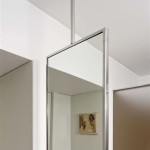How To Un-Mirror Your Zoom Video
Mirroring the video display in Zoom can be a helpful feature, especially when presenting materials with text. However, this mirrored view can be disorienting for other participants if you are demonstrating a physical task or holding up an object. Understanding how to manage this setting is essential for effective communication.
Zoom provides a straightforward method for controlling the video mirroring option. This setting affects the self-view, the image of yourself that you see during a meeting. It does not impact how other participants view your video. This means that while you may see a mirrored image, others in the meeting will see the correct, un-mirrored version.
To access the mirroring setting, users must first locate the Zoom application settings. This process differs slightly depending on whether the user is joining a meeting or configuring the application outside of a meeting.
If a user is already in a meeting, they can access the settings by clicking on the upward-facing arrow located next to the "Start Video/Stop Video" button. This will open a menu. From this menu, select "Video Settings...". This action will open the video settings window.
For users configuring the application outside of a meeting, the process begins by opening the Zoom application. In the upper right corner, click on the gear icon. This will open the general settings window. From the left-hand menu, select "Video". This will open the video settings window.
Once in the video settings window, locate the checkbox labeled "Mirror my video". This checkbox controls the mirroring function. If the box is checked, the user's self-view will be mirrored. Unchecking the box will disable mirroring, presenting the self-view as others in the meeting see it. This change takes effect immediately and does not require restarting the meeting or the application.
Understanding the effect of mirroring is crucial. When mirroring is enabled, any text displayed in the video will appear backward to the user. However, other participants in the meeting will see the text correctly. This is why mirroring can be beneficial for presentations involving screen sharing or holding up physical documents.
Conversely, when demonstrating a physical task, mirroring can be confusing. For example, if a user points to their right with mirroring enabled, their self-view will show them pointing to the left. While this appears correct to the user, other participants will see them pointing to the right. Disabling mirroring in these situations ensures that the user's movements align with what others in the meeting observe.
The ability to toggle the mirroring option provides flexibility for different meeting scenarios. Users can enable mirroring for presentations with text and then disable it for demonstrations or other activities where accurate visual representation is critical.
Beyond the basic mirroring functionality, Zoom offers further video customization options within the video settings window. These options allow users to adjust settings such as camera selection, aspect ratio, and touch up my appearance. Exploring these settings can further enhance the user’s video conferencing experience.
Remembering the location of the "Mirror my video" checkbox is key to managing this setting efficiently. Regularly checking this setting before different types of meetings ensures clear and effective communication with other participants. This simple action can prevent confusion and enhance the overall quality of online interactions.
Practicing toggling the mirror setting can help users become comfortable with the difference between the mirrored and un-mirrored views. This practice is particularly helpful for those frequently presenting or demonstrating tasks during Zoom meetings. Familiarization with the setting allows for seamless transitions and minimizes disruptions during presentations.
By understanding how to control the video mirroring setting, users can tailor their Zoom experience to the specific needs of each meeting. This control enhances communication clarity and fosters a more professional and engaging online interaction.
Zoom continually updates its software, so the specific appearance of the settings menu may change over time. However, the core functionality of the mirroring option remains consistent. Consulting Zoom's official support documentation will provide the most up-to-date information regarding any changes in the user interface or settings location.
Taking advantage of Zoom's comprehensive video settings empowers users to create a more effective and comfortable virtual meeting environment. This control over the mirroring function is a valuable tool for ensuring clear and consistent communication in a variety of online scenarios.
How To Reverse The Mirroring Effect In Zoom Free Technology For Teachers

How Do I Disable Mirror Image In Zoom Okiolabs

How To Mirror My In Zoom

How To Invert Your On Zoom

How To Mirror My In Zoom

Easy Steps To Mirror My On Zoom

How To Mirror On Zoom Flip Left Right

Easy Steps To Mirror My On Zoom

How To Invert Your On Zoom

Images Show In Reverse Or Upside Down Windows 11 10








